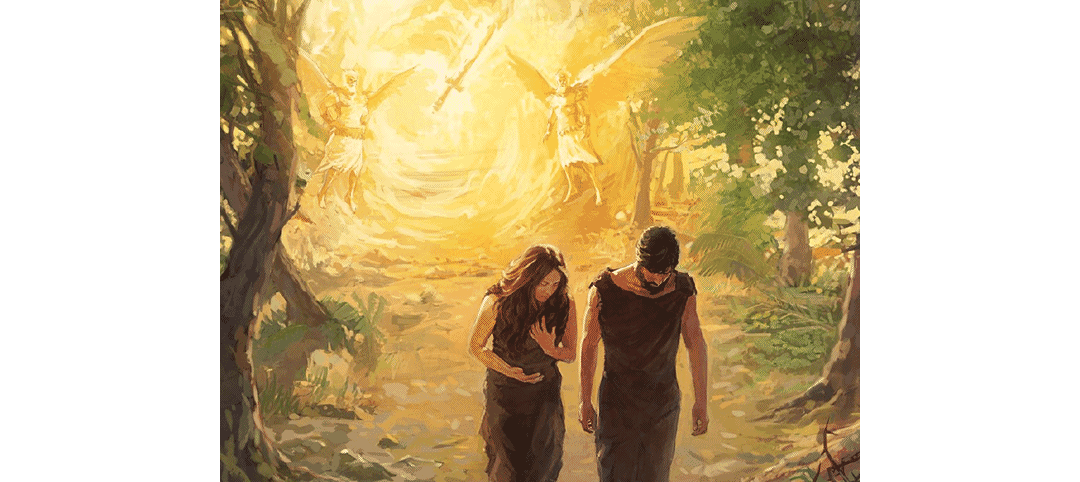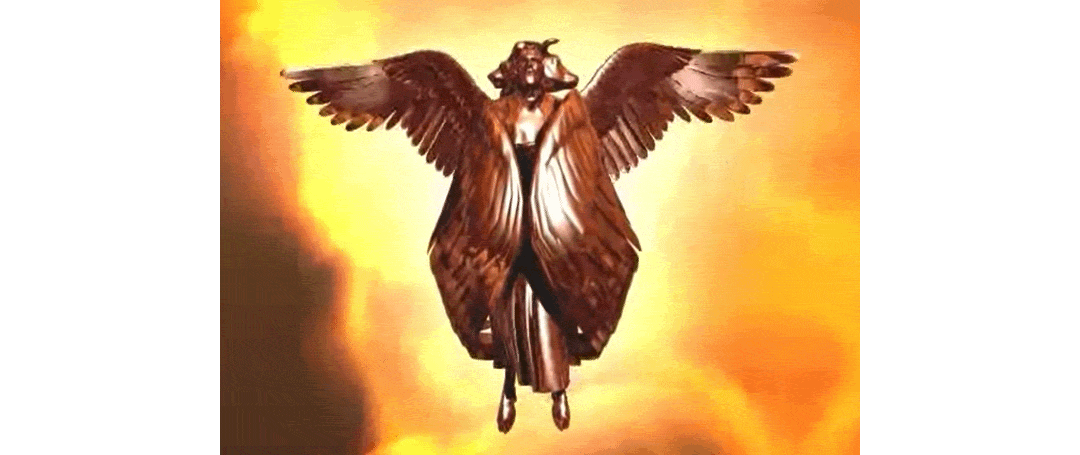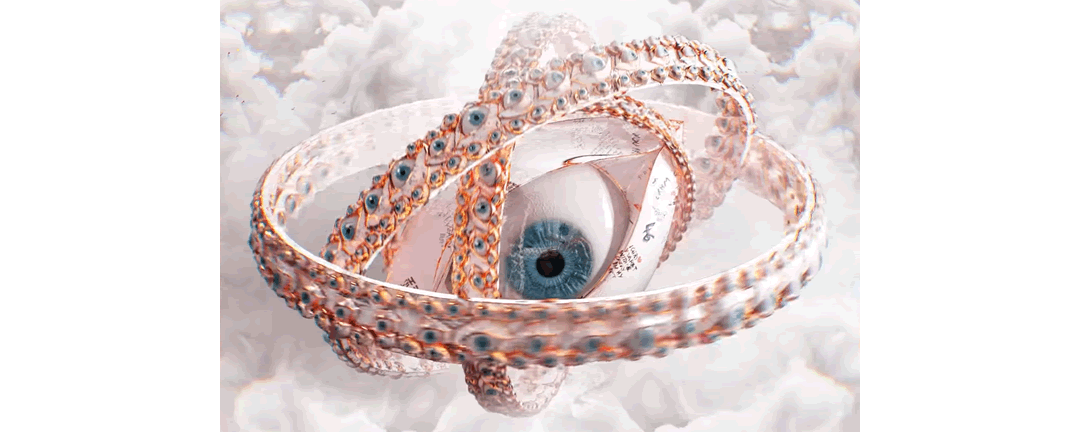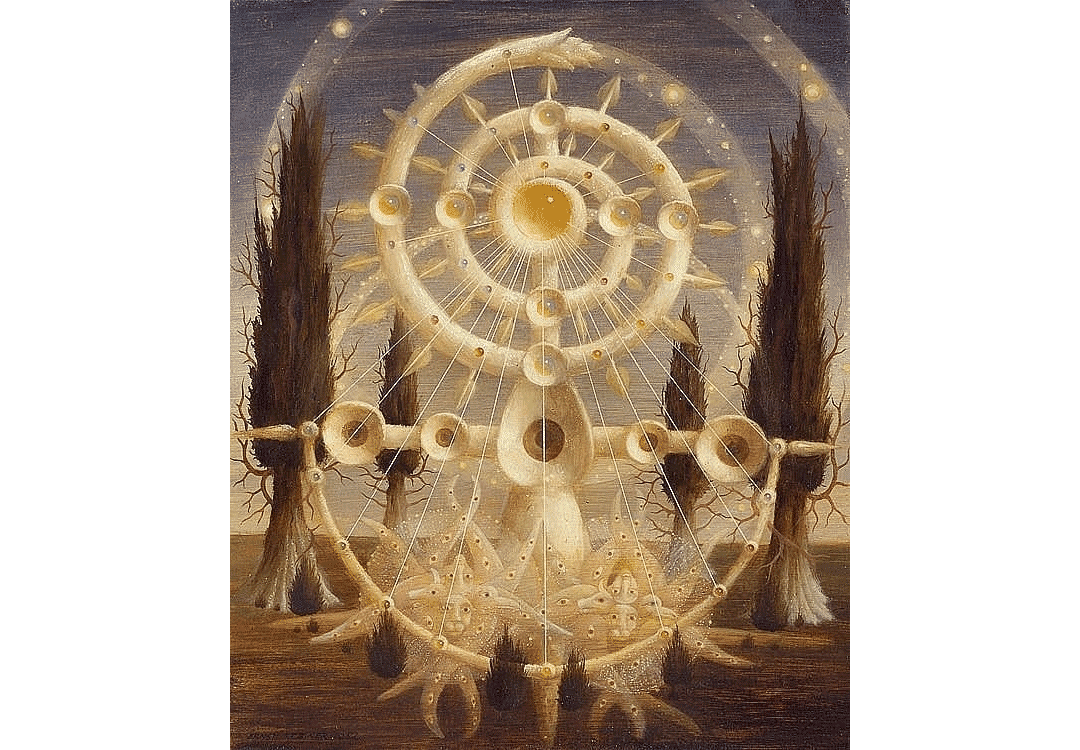Although I’m not religious, as a kid I was raised under a form of Christianity and followed it until my early teens. I still remember some of the feelings: a sense of being surrounded by invisible magic, a reverence for sacredness, a bizarre mix of fear and comfort from feeling insignificant and powerless in a world ruled by forces larger than myself. To be honest, it felt pretty magical - it wasn’t an awful feeling. Abandoning my religious views meant leaving that magic behind, in favor of a universe ruled by chance and indifference. It’s probably from nostalgia, then, that I’ve got a weird fondness for biblical art which aims to capture some of those feelings.
Interestingly, nearly all biblical art lacks it. There’s an interesting phenomenon in the disparity between biblical imagery I was shown as a kid, or see in settings like the Sistine Chapel, and the sometimes very clear descriptions that the Bible actually provides. A good example: angels. The Bible says that when Adam and Eve left the Garden of Eden, God placed “cherubim with a flaming sword” to guard its gates. The illustrations of this scene I was shown in Sunday School were inevitably along these lines:
 I think most Christians regard this as “just an artist's rendition of an angel”, because “we don’t know what they look like.” That’s what I was told, anyway. However, interestingly, in the book of Ezekiel the Bible goes all out in describing some very specific imagery of angels, including the appearance of a cherub. I’ll spare you the details, but it explicitly describes them having “four faces”, “soles of calf’s foot”, “sparkled like burnished bronze”, “like burning coals of fire”, 4 interlocking wings covering their body, etc. A more respectable visual interpretation of a cherub is as follows:
I think most Christians regard this as “just an artist's rendition of an angel”, because “we don’t know what they look like.” That’s what I was told, anyway. However, interestingly, in the book of Ezekiel the Bible goes all out in describing some very specific imagery of angels, including the appearance of a cherub. I’ll spare you the details, but it explicitly describes them having “four faces”, “soles of calf’s foot”, “sparkled like burnished bronze”, “like burning coals of fire”, 4 interlocking wings covering their body, etc. A more respectable visual interpretation of a cherub is as follows:
 That's pretty weird, and way more interesting. Remember, as a Christian, this form is pure and sacred: a glimpse of Heaven, an embodiment of the spiritual goodness that a Christian is meant to revere. It’s a bit odd, really. You have to admit though, even from a non-Christian perspective, it’s pretty cool. It’s a bizarre, terrifying, sacred thing from an unfathomable world, a world that real people are instructed to revere and worship. But this is just the tip of the iceberg: let me introduce you to one of my favorite biblical images: the “thrones”, sometimes called “ophanim”. Apparently another form or type of angel, it’s implied that these may be the highest of heavenly beings, the closest to God himself.
That's pretty weird, and way more interesting. Remember, as a Christian, this form is pure and sacred: a glimpse of Heaven, an embodiment of the spiritual goodness that a Christian is meant to revere. It’s a bit odd, really. You have to admit though, even from a non-Christian perspective, it’s pretty cool. It’s a bizarre, terrifying, sacred thing from an unfathomable world, a world that real people are instructed to revere and worship. But this is just the tip of the iceberg: let me introduce you to one of my favorite biblical images: the “thrones”, sometimes called “ophanim”. Apparently another form or type of angel, it’s implied that these may be the highest of heavenly beings, the closest to God himself.
The thrones are “eye-wheels”. While the following description is in Ezekiel, the canonicity of thrones as a distinct type of angel may be vague, depending on your opinion of the Book of Enoch. They’re described as being “like a wheel intersecting a wheel”, with rims “covered in eyes”. The wheels were “so high” that Ezekiel describes them as “dreadful”. When these creatures moved, the sound was “like the tumult of an army”.

 Nightmare stuff, really. It’s terrifying, unfathomable. You can understand why Renaissance artists reinterpreted cherubim as putti (winged babies), for instance. Imagine if Christian art, such as the decorations inside cathedrals, evoked this kind of terrifying imagery? It’s an interesting thought experiment… it’d surely change the way people view Christianity, for better or for worse.
Nightmare stuff, really. It’s terrifying, unfathomable. You can understand why Renaissance artists reinterpreted cherubim as putti (winged babies), for instance. Imagine if Christian art, such as the decorations inside cathedrals, evoked this kind of terrifying imagery? It’s an interesting thought experiment… it’d surely change the way people view Christianity, for better or for worse.
For me at least, I also think this kind of image evokes an element of the feeling of believing in God: it’s that mixture of fear, and comfort. A cherub in the form of a winged baby doesn’t exactly make one feel safe, or inspire awe. “Is this what stands between me and the forces of darkness?” It’s a bit undramatic, really. The biblically accurate depiction of the forces of God is almost something of Lovecraftian scale. It makes you feel safe that such terrifying, unfathomable power is protecting you. It’s a feeling of humility, and smallness, that nothing you could ever possibly accomplish in life could compare to the invisible forces beyond you.
It’s interesting to consider that while this kind of "weirdness" is intrinsically creepy/scary, when sacred things have unfathomable forms, they naturally inspire more awe and respect. When something deflects human understanding, its form itself feels like evidence that it's indeed from another world. Lovecraft understood this, of course. Easily comprehendable forms will necessarily betray the extreme degree of reverence and awe one is expected to observe, making one instinctively question its otherworldly nature, versus merely being something that humans thought up. I think this is a mistake that nearly all biblical art makes, “diluting” the imagery to be understandable to the masses. There’s not much biblical art that avoids this pitfall, and the stuff that does is pretty special and interesting.
I’ll finish off with another artistic example that gets the feeling right, by Swiss-Austrian painter Ernst Steiner. It's a weird one.
 “Lebensbaum” [Tree of Life] (1982)
“Lebensbaum” [Tree of Life] (1982)




